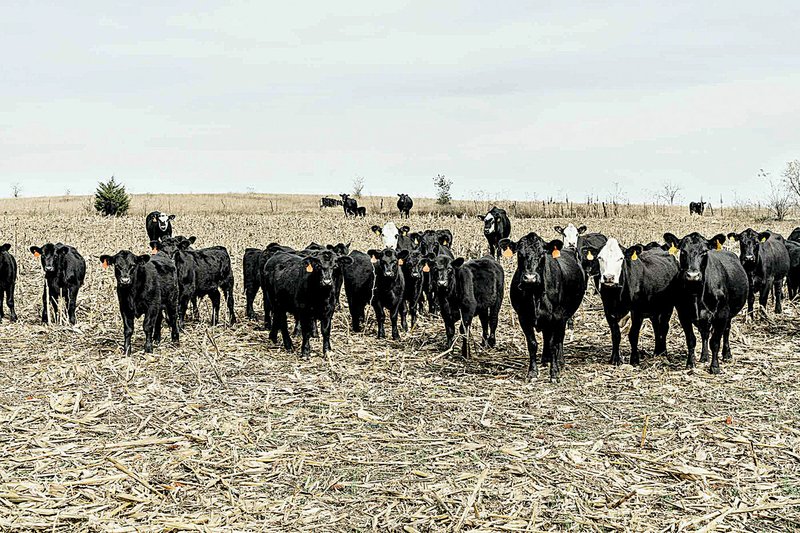MINNEAPOLIS -- New federal regulations mark the first serious attempt in at least 20 years to tackle what many have called the systematic overuse of antibiotics in healthy farm animals.
Yet the rules that went into effect Jan. 1 -- and have been in the works for several years -- do not come without controversy. Livestock associations have said the new rules that pertain to veterinarians will increase paperwork and costs. Conversely, some consumer groups say the regulations don't go far enough.
The regulations require producers who raise cattle, cows, pigs, chickens, turkeys and other animals to obtain a veterinarian's approval before using any antibiotics that also are important to human health. And antibiotics may no longer be used in healthy animals as a feed additive to increase weight.
The routine use of antibiotics in animals that are also used in human drugs has been a growing concern of consumers and health professionals.
"The overarching goal is to ensure these medically important antimicrobials that are given to food-producing animals in medicated feed and drinking water are used judiciously," said Mike Murphy, veterinary medical officer at the U.S. Food and Drug Administration's Center for Veterinary Medicine.
The problem is that the more frequently antibiotics are used, he said, the more quickly bacteria can develop resistance to them, rendering the lifesaving drugs less effective or ineffective.
The U.S. Centers for Disease Control and Prevention estimates that each year in the U.S. at least 2 million people become infected with bacteria that are resistant to antibiotics, and at least 23,000 people die as a direct result of infection.
Health professionals and consumer groups have pressed the FDA and the livestock industry to avoid unnecessary or inappropriate uses of antibiotics. Fast-food companies including McDonald's, Panera, Chipotle, Subway and others have announced policies to stop buying at least some meat products from producers that use certain antibiotics routinely.
University of Minnesota extension educator Nicole Kenney Rambo said the new federal rules mean that when antibiotics are fed to animals for a medical reason -- to treat an infection or reduce the risk of the disease spreading in a herd -- those antibiotics require a veterinarian's prescription for antibiotics added to water, or a "veterinarian feed directive" for antibiotics added to feed.
Prescribed antibiotics can be injected, but adding them to food or water is considered more efficient and less stressful when large numbers of animals are involved.
The rules also require producers, veterinarians and feed mills to document the use of prescribed antibiotics and keep those records on hand for several years. "That is a big deal for the livestock industry simply because it requires extra infrastructure," said Rambo, who works primarily with the beef industry.
The regulations authorize enforcement measures if necessary, including fines, for producers and veterinarians who don't comply.
Julia Wilson, executive director of the Minnesota Board of Veterinary Medicine, credits medical professionals and the public in large part for pushing the federal changes. "It's a good move in trying to preserve antibiotics," she said. "There's less antibiotics going into feed, and that also means there's less going out in the environment."
However, David Wallinga, a medical doctor and a senior scientist for the Natural Resources Defense Council, said antibiotics fed to animals to increase weight are only about 15 percent of all antibiotics fed to livestock, so the total use of the drugs may not drop much.
The remainder, he said, are used for disease treatment or prevention, which still is allowed under the new rules. "These are small steps but not nearly enough to really address the enormous overuse of antibiotics in these livestock systems," Wallinga said.
European countries, such as Denmark and the Netherlands, use a fraction of the antibiotics that U.S. producers use per pound of meat, he said. "What's considered necessary in terms of antibiotic use is vastly different in these countries compared to the U.S."
Antibiotics should still be used for sick animals, Wallinga said, but allowing use for disease prevention amounts to a loophole, because disease prevention can be interpreted broadly. "Many of them can still continue to be used in the same way at virtually the same dosage levels as they were being used for growth promotion," he said.
FDA officials have said veterinarians practicing "judicious use principles" should evaluate whether a particular drug is appropriate for preventive use, whether it addresses particular bacteria, is appropriately targeted to animals at risk and whether reasonable alternatives exist.
David Preisler, executive director of the Minnesota Pork Board, said the new federal rules have been in the works for the past couple of years, so producers on the state's 3,000 hog farms have been expecting them.
Many hog farmers already have phased out the routine use of antibiotics to help animals gain weight, Preisler said. And many producers, especially those with large operations, already have relationships with veterinarians that include regular farm visits and consultations. Those most affected by the new rules, he said, will be hog and other livestock farmers who have not routinely used veterinarians and now need to obtain prescriptions for antibiotics that previously were available over the counter.
"If a vet is going to prescribe an antibiotic to prevent something, the product now has to be labeled to do such, and the veterinarian is going to have to document that the preventative was needed," Preisler said. "It's really putting that decision in the veterinarian's hands and taking that decision away from a farmer."
Business on 02/07/2017
